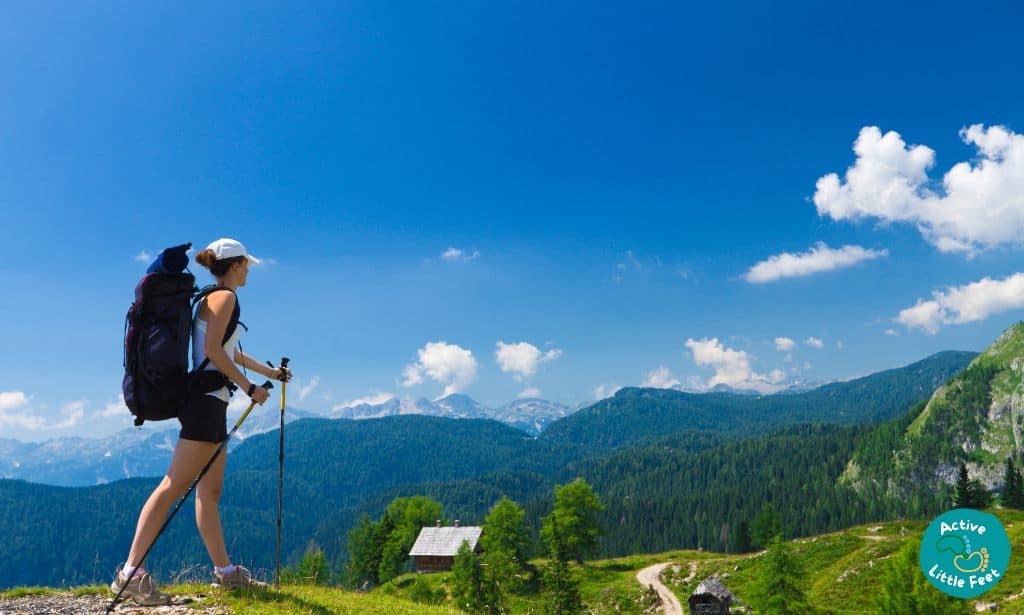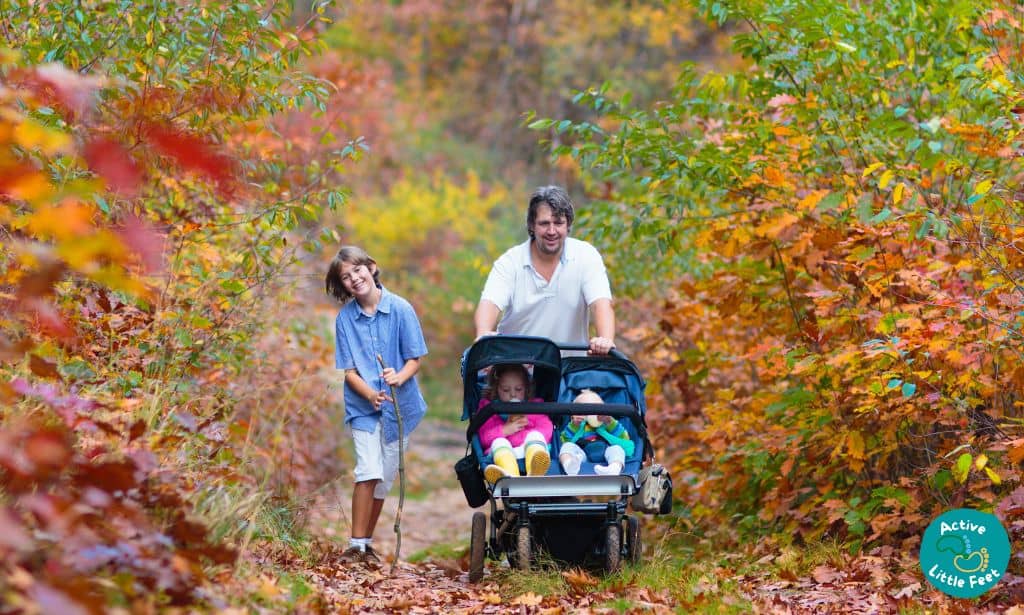Bringing your baby on a hike is a great way to introduce them to nature, get some much-needed workout or fresh air and, most importantly, bond. Unfortunately, you must carry them until they are old enough to walk alone.
You can either use a baby carrier, which I recommend for kids below 12 months, or a stroller. But both of these have their own challenges.
Challenges of Strollers and Carriers when Hiking
For instance, while a baby carrier is the easiest and safest way to carry a baby when hiking, it gets harder to handle the weight as the kid grows and gets heavier. The UI Hospitals & Clinics Rehabilitation Services team advises carrying only 10% of your body weight or less when hiking.
At age 2, my toddler is now 25 pounds, making her heavier than what I should carry. Add water, extra clothes, snacks and a few other things, and you can see how that is impossible. The last time my husband and I tried that, we both ended up with chest pains.
A stroller solves this problem and provides space to carry more stuff. But it puts a limit on where you can go hiking. You will need to stick to easy, paved trails, which can be overcrowded at best and boring at worst.
So, how do you navigate hiking with a stroller or/and carrier?

1. Start with a Dry Run Without Your Child
You must familiarize yourself with the various terrains you plan to take with your child. Go for a dry run first without the child and check the condition of the terrain.
- Is the path paved and smooth, or is it rocky and full of holes?
- Is it flat or steep? If there is an incline, do you need trek poles or holding on to rocks to climb up?
- Are there rest stops along the way, where you can buy water, or leave a stroller?
- How wide is the path?
Knowing these things will help you determine whether you should take a stroller or a carrier; or avoid the trail altogether. We discussed some of these tips in our post Types of Hiking and How to Choose the Best for Your Kids.
I’ve also seen paths where we could go a reasonable distance with the stroller and then finish with a carrier. I used a bike lock to secure the stroller on a discreet tree along the way and got it on the way back.
2. Use a Preformed Baby Carrier
Baby slings are cheaper and lighter in weight, but they are also complicated to use. For a hike, go with a preformed baby carrier as long as the child can sit upright (4 months and above).
These models only have a few clips to attach, and they offer both front and back positions. The front position is great when the kid is younger and lighter, but it will work even better on your back when they get heavier.
Because a preformed stroller is designed to handle up to 30 lbs., it comes with padded shoulder straps, a metal frame and enhanced comfort measures. And as a bonus, they are equipped with weather protection systems like sun shade and a waterproof exterior.
3. Choose a Less Crowded Time
I have found this is especially necessary when I am using a stroller. It is not as fun taking a stroll on a path full of other people and dogs because then you feel worked up and unable to soak up the good vibes of nature and feel relaxed.
I recommend going early, first of all, when you and the child are still full of energy, and the sun is not so hot. Plus, if you are out and about by 8-9 am, you will be back just in time for lunch and an afternoon nap. (Do kids need sunscreen when hiking?)
I also avoid weekends and holidays because most people get out on those days. If you can, plan your hikes on weekdays when there are fewer people.

4. Have a Partner
A partner is invaluable whether you are using a stroller or a carrier to carry the baby. When my toddler was under 18 months, one of us would carry her in the carrier, and the other would carry the bag with everything else. This means less weight on one person.
We still do the same today with a stroller. It’s easier, but pushing a stroller with a baby and stuff on it is tiring. We take turns and help each other with tasks along the way. For example, when we need to switch between the stroller and the carrier, one of us will hold the baby while the other secures the stroller.
The big part of it, though, is that you have someone to talk to along the path, so it’s not so boring.
5. Use an Off-Road Hiking Stroller
Unless the trail you are using is paved and smooth, invest in an all-terrain stroller. This type of stroller is equipped with four massive air-filled wheels that make it easy to maneuver any surface, including grass, gravel and pavement. Everything about the stroller is designed for durability and ease in rough terrain.
If you have the budget for it, I would recommend the Thule Urban Glide 2.0 or BOB Alterrain Pro because of the safety features they have included. The BOB Revolution Flex 3.0 is a much cheaper option, but it lacks some safety features, such as hand brakes.
As a disclaimer though, having an all-terrain stroller does not mean you can go to hilly and rocky trails with a baby. Such places are hard enough to navigate when you are alone, so taking a baby and a stroller is taking unnecessary risks.
6. Plan Rest Stops
If you plan to walk farther than your area code, you and the baby will get tired at some point. Plan a rest stop or two to take a breather, have a drink and eat something. Most of our trails have rest stops and benches where you can sit and relax.
This really comes in handy because we need to change the baby’s diaper or feed them. I’ve found that staying too long in a stroller or the carrier is not so healthy either so we get to take out the baby so they can have a break too. And if they are sleeping, it’s more restful when you are not walking.
The secret to hiking with a baby is having no expectations and just going with the flow. Like every other aspect of parenting, something will go wrong somewhere. But learning how to navigate hiking with a stroller and carrier can make things easier. We are confident the above tips will help because they have come in handy for us.




